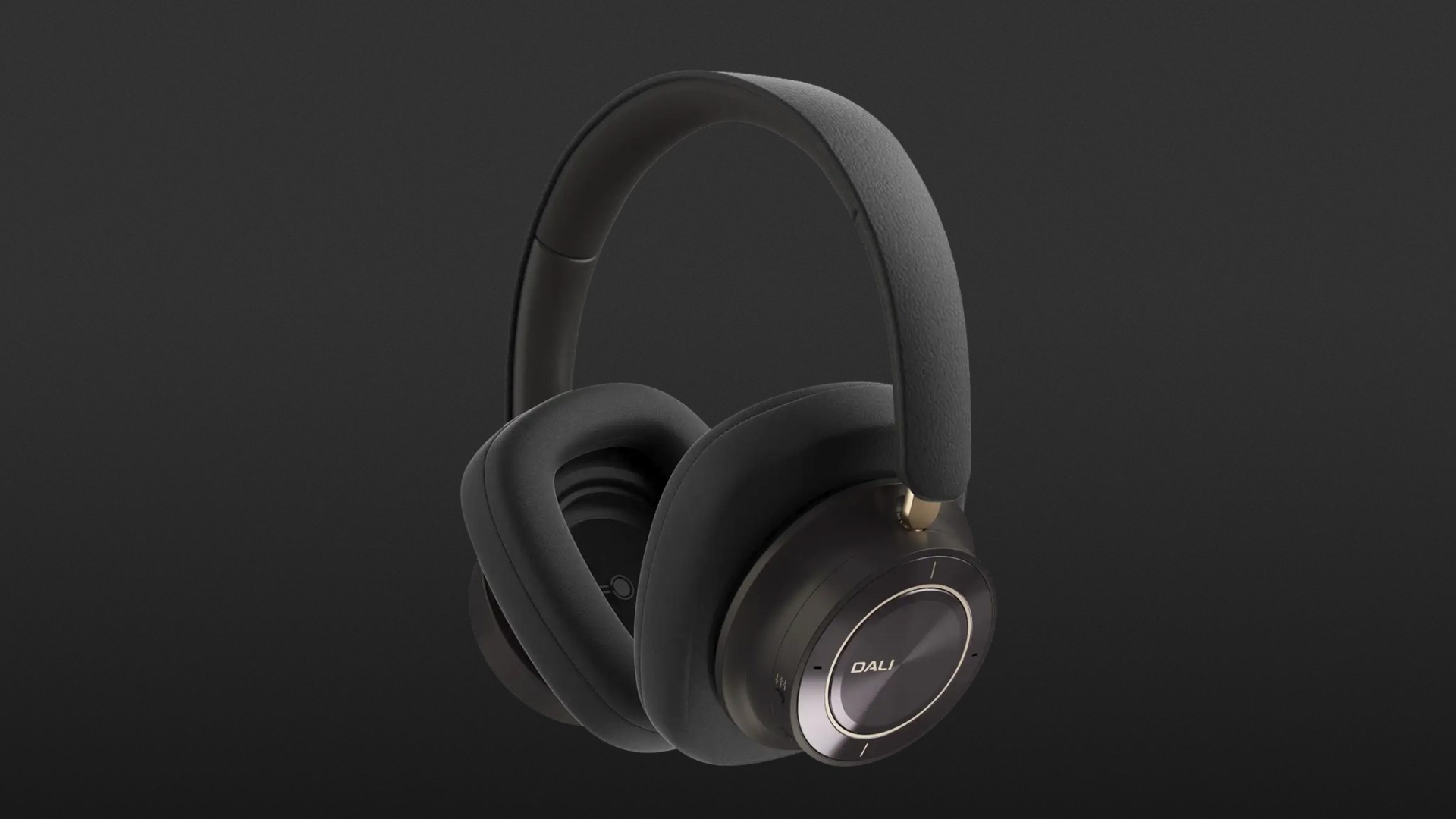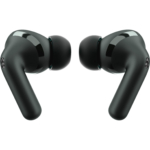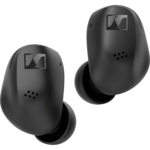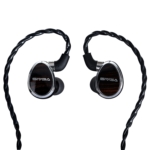With the IO-12, Dali demonstrates that first-class sound quality and mobile music enjoyment can be perfectly combined. These over-ear headphones, which cost just under a thousand euros, are excellently made, easy to use and, above all, have an impressive sound across the board, while they also offer practical noise cancelling for mobile use. The Dali IO-12 is not a bargain, but in terms of sound, it is a real gem.
- Very good sound quality
- High wearing comfort
- Long battery life
- USB operation
- Wind noise with active noise cancelling
- Overly easy operation of the power button
- No folding function
The Danish manufacturer Dali, short for Danish Audiophile Loudspeaker Industries, has launched the IO-12, another pair of wireless over-ear headphones that aim to meet even the highest demands. The flagship model in their headphone series is the IO-12, which, with a retail price of around €1,000, is significantly more expensive than the Dali IO-4 and Dali IO-6 models.

Processing of the Dali IO-12
The construction of these headphones is robust and high quality (IP52 certification). The rather straightforward look with a combination of cocoa brown texture and bronze-coloured metal with decorative elements is unique but might also be a matter of taste. The package includes a protective case as well as the necessary connection and charging cables.
The headband and the surface of the earcup padding are made of genuine leather. The headband is not adjustable in length, but this did not affect the fit, at least not in my case. The earcups are easy to rotate and can also be moved vertically so that the large rectangular, interchangeable padding moulds to the shape of your head. The lack of a folding mechanism loses them some points, as without it, the IO-12 are less easy to stow away. If you are not using the headphones in mobile mode, their size makes them a little annoying when they are dangling around your neck during phone calls.
The electronics rely on Bluetooth 5.2 and support the audio codecs SBC, AAC, aptX, aptX HD and aptX Adaptive incl. Multipoint can be used with a maximum of two devices. In addition, these headphones can also be operated loss-free via the USB-C interface with Class Compliant drivers and both active or passive in cable mode. With the exception of the purely passive operating mode, noise cancelling and the DSP functions of the electronics are available in all modes. This makes the IO-12 an ideal accessory for mobile use but also for travelling on planes and working at a computer.
These closed dynamic headphones rely on a specially developed 50mm driver with a rigid paper diaphragm. For the first time, the manufacturer is using its own patented SMC magnet technology, which is intended to ensure explicitly low distortion values and, thus, a special level of detail resolution. All of which sounds exciting!
The Dali IO-12 in practice
First of all, I’d like to praise the high wearing comfort. The Dali IO-12 fitted securely and comfortably on my head and did not pinch even during long listening sessions. Excellent.
In terms of operation, the manufacturer has pursued a no-frills concept. They have deliberately done without an app. Instead, three buttons and a central control panel on the outside of the right earcup ensure straightforward control. The on/off button is also used for pairing, while a neighbouring second button can be used to switch between neutral and a sound tuning that boosts the bass range slightly to make it fuller. Finally, a third button, located on the opposite side of the earcup, allows the noise cancelling to be switched on and off or to switch into transparency mode. Several functions can be controlled via the central button using single, double and triple clicks and long presses. This enables you to start and pause music playback, skip tracks in both directions, call up the voice assistant and make phone calls. The volume can be adjusted via switching functions at the top and bottom of the same button. The functions are supported by unusually clear voice messages. Multi-coloured LEDs allow you to visualise various functions and the charging status.
In practice, the straightforward functionality worked without any problems and proved to be absolutely practical. The only exception: I occasionally switched the device on by mistake when taking it off and putting it away. Instead of a single button press, I would have preferred to hold the button for longer to trigger this function.
The wireless connection proved to be consistently stable in combination with an iPhone 15 and scored points with its fast pairing. It was able to cover several rooms before failures occurred. The manufacturer states a battery life of up to 35 hours without any further comments. During our test, I can confirm that the IO-12 was a practical long-distance runner, even with noise cancelling switched on, which made it ideal for longer journeys. A full charge can be achieved in just under two hours.
Finally, the voice quality during phone calls was rated by my conversation partners as average to good, as well as being free of background noise. At this point, however, I noticed an error: when answering calls, the call was repeatedly terminated when switching to the Bluetooth wireless link for incoming calls on the phone.
Noise cancelling
Active noise cancelling can only be switched on and off. The intensity of the background noise suppression was rather moderate but did not have a detrimental effect on the sound quality. Passive isolation and the additional electronic insulation nevertheless created clear added value for mobile use, and this intensified the enjoyment of music or created a pleasant isolation from the environment without creating a feeling of detachment. Background noise occurred when the wind hit the external microphones. Incidentally, the circuit also worked well when the music was switched off, for example, to create a quiet room on a train journey. Dali also offers a transparency mode on the IO-12, which makes it easier to communicate with your environment at the touch of a button without having to take off the headphones.
The sound of the Dali IO-12
Our sound evaluation tests were mainly carried out in active mode with Bluetooth and active noise cancelling, as I assumed that this use was the main selling point for the product. The results were amazingly good as, in my opinion, the IO-12 worked on a par with purely wired systems.
These headphones sounded excellent and delivered a clear, high-resolution, high-level sound image. Compared to Bluetooth solutions in a higher price range, this device stood out with its tidy, explicitly detailed, open and realistic sound reproduction.
Basses were contoured and punchy, and they delivered deep bass when required without being distracting. The mid-range spectrum did not allow itself to make any mistakes when reproducing voices, acoustic instruments, distorted guitars or dense mixes but excelled with a tuning that found a good middle ground between basic warmth and detail resolution. At the top end, the IO-12 was transparent and fast but without any harshness from the driver. This benefited the transient imaging, which in turn resulted in excellent localisation in the stereo panorama and equally good imaging of spatial depth.
The strengths of the reproduction were also evident when listening to classical music and jazz recordings, where, in addition to natural tonal colours and a special spatiality, the reliable reproduction of dynamics was particularly important, something which the IO-12 certainly delivered. A quiet environment was an advantage here. However, noise cancelling also ensured an impressive listening experience in less ideal situations.
To mention the other connection options: In USB mode, the IO-12 was recognised as an output device by a MacBook without any problems and impressed me with audiophile sound quality. As the limitations of the Bluetooth interface no longer applied at this point, files up to 24-bit and 96 kHz were transferred uncompressed from the computer, which brought further advantages. The limitations of the wireless link, for example, when using a DAP such as the Shanling M3X, were also eliminated in cable operation.
In active mode with the same smartphone, I didn’t notice any relevant change in the sound. However, the sound quality also remained largely unchanged in passive mode, which spoke in favour of the quality of the driver design and the rather discreet access of the active electronics. In addition to a slight drop in level, the reproduction lost some of its punch and fullness as well as seeming less radiant. Nevertheless, I would describe passive operation as a good fall-back option.
During my test, I operated the sound mode in the neutral position with completely satisfactory results. If you wanted something a little fuller in the bass range, you could select the corresponding sound switch at the touch of a button. Fortunately, this option was not exaggerated, instead being rather discreet, thus largely preserving the open character of the IO-12.
Conclusion
With the IO-12, Dali has succeeded in creating an outstanding Bluetooth-capable HiRes headphone that focuses on high demands in terms of sound reproduction. The Danish manufacturer actually fulfils the high expectations placed on the product, which has a price tag of around 1,000 euros. In addition to the straightforward operating concept and high wearing comfort, above all, it was the sound quality that set the IO-12 apart from its competitors. The noise cancelling feature makes a useful contribution to supporting mobile use.
Technical specifications
- Ear couplingOver-ear
- Typeclosed
- Transducer principledynamic
- Frequency response (headphones)10 - 48.000 Hz
- Impedance25 ohms
- Sound pressure level (SPL)100 dB
- Weight without cable370 g
- Cable length300 cm
What's in the box
- 1.2 m USB-C cable
- 1.2 m connection cable (3.5 mm jack)
- 3 m connection cable (3.5 mm jack)
- 6.35mm stereo jack
- Aircraft adapter
- Carrying case
Special features
- BT-Codecs: SBC, AAC, aptX, aptX HD, aptX Adaptive















































is very good.